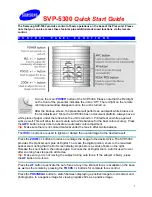
Genie_TS_Series GigE Vision Camera
Additional Reference Information
169
Optical Considerations
This section provides an overview to illumination, light sources, filters, lens modeling, and lens
magnification. Each of these components contribute to the successful design of an imaging
solution.
Illumination
The amount and wavelengths of light required to capture useful images depend on the particular
application. Factors include the nature, speed, and spectral characteristics of objects being imaged,
exposure times, light source characteristics, environmental and acquisition system specifics, and
more. The Teledyne DALSA Web si, provides an introduction to this
potentially complicated issue. Click on Knowledge Center and then select Application Notes and
Technology Primers. Review the sections of interest.
It is often more important to consider exposure than illumination. The total amount of energy
(which is related to the total number of photons reaching the sensor) is more important than the
rate at which it arrives. For example, 5
J/cm
2
can be achieved by exposing 5mW/cm
2
for 1ms just
the same as exposing an intensity of 5W/cm
2
for 1
s.
Light Sources
Keep these guidelines in mind when selecting and setting up light source:
LED light sources are relatively inexpensive, provide a uniform field, and longer life span
compared to other light sources. However, they also require a camera with excellent sensitivity.
Halogen light sources generally provide very little blue relative to infrared light (IR).
Fiber-optic light distribution systems generally transmit very little blue relative to IR.
Some light sources age such that over their life span they produce less light. This aging may
not be uniform—a light source may produce progressively less light in some areas of the
spectrum but not others.
IR Cutoff Filters
Genie TS cameras are responsive to near infrared (IR) wavelengths. To prevent infrared from
distorting the color balance of visible light acquisitions, use a “hot mirror” or IR cutoff filter that
transmits visible wavelengths but does not transmit near infrared wavelengths and above.
All models of Genie TS color cameras have a spectral response that extends into near IR
wavelengths (as defined for each sensor model in the sensor specification descriptions). Images
captured will have washed out color if the sensor response is not limited to the visible light band.
The following graphics shows the transmission response of typical filters designed for CMOS sensor
cameras. When selecting an IR cutoff filter, choose a near infrared blocking specification of
~650nm. Filters that block at 700nm or longer wavelengths, designed for CCD cameras, are not
recommended for Genie TS color cameras.
















































